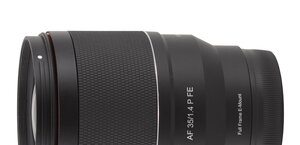Tamron 17-50 mm f/4 Di III VXD
10. Autofocus and focus breathing
Aufofocus
The Tamron 17–50 mm f/4 Di III VXD, as its name indicates, features a linear VXD autofocus motor. Its performance, combined with that of the Sony A7R IIIa, is noiseless. The speed depends on the conditions and focal length you employ. The fastest performance can be observed at the wide angle, where running through the whole range and confirming the focus takes about 0.3-0.5 of a second. At the 50 mm focal length this process takes longer, amounting to 0.6-0.8 of a second. Still, it is interesting that these times can be additionally shortened when you change the autofocus mode into AF-C.The parameters of the tested Tamron are the reason why you operate with quite significant depths of field in case of most photo opportunities and it makes focusing process far easier. Indeed, during our testing sessions autofocus misses were few and far between, no matter whether we worked outside or in the studio. In this category the tested lens deserve to be praised.
The photos below show additionally that the Tamron 17-50 mm f/4.0 doesn't have practically any visible front or back focus tendency.
Please Support UsIf you enjoy our reviews and articles, and you want us to continue our work please, support our website by donating through PayPal. The funds are going to be used for paying our editorial team, renting servers, and equipping our testing studio; only that way we will be able to continue providing you interesting content for free. |
- - - - - - - - - - - - - - - - - - - - - - - - - - - - - - - - - - - - - - - - - - - - - - - -
| A7R IIIa, 35 mm, f/4.0 |
 |
| A7R IIIa, 50 mm, f/4.0 |
 |
Focus breathing
Focus breathing tests show reframing images as you oversharp them. We conduct the test by manually passing from the minimum focusing distance to infinity with the aperture stopped down; then we check how the field of view of the lens changed as a result.After conducting a significant number of tests now we think we are also able to determine some reference points. A frame change ranging from 0 to 5% we consider to be low. Between 5 and 10% you can speak about medium levels. Usually such values constitute also the maximum efficiency level of any breathing compensation algorithms, present in some bodies. Between 10 and 15% focus breathing is high, above 15% its level can be called very high. The test video of the Tamron lens is presented below:






